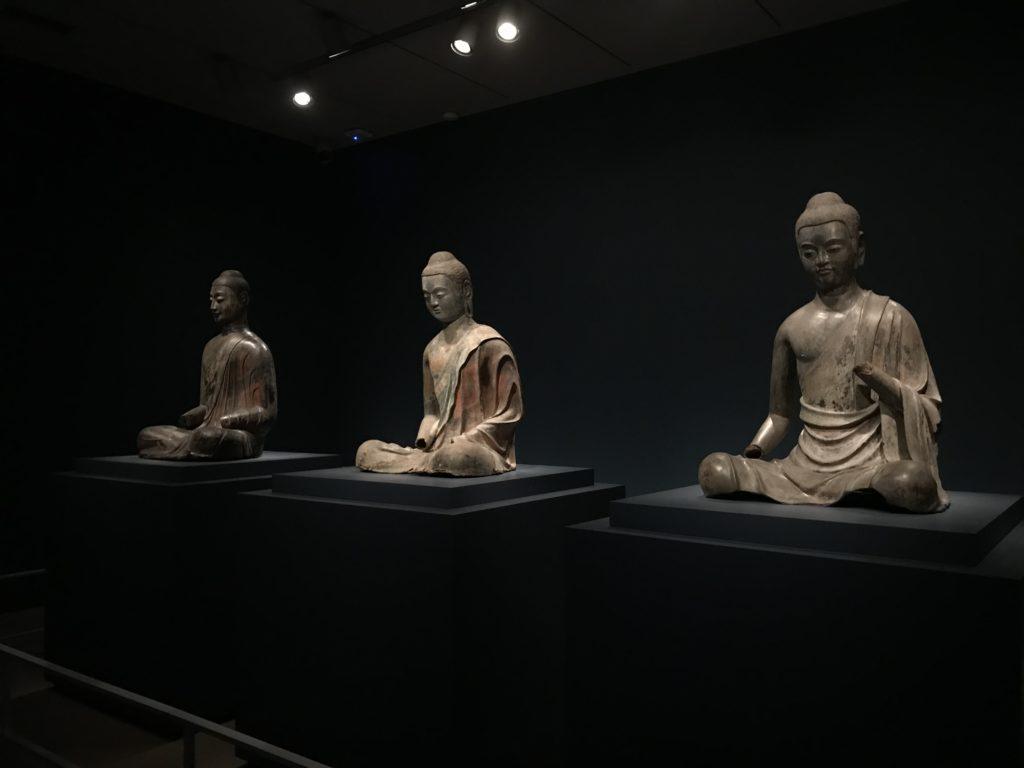
Positioned on Independence Avenue by the National Mall, the Freer Gallery of Art and the Arthur M. Sackler Gallery feature world-renowned American and Asian art collections. Unlike more aesthetic-driven galleries, the Freer and Sackler galleries connect their art exhibitions to significant events and developments from the history of Asia.
Aligning with this approach, the galleries’ latest exhibit, “Secrets of the Lacquer Buddha,” features sixth- and seventh-century Chinese lacquer Buddha statues and discusses the techniques used to make inferences about their creation and history.
The exhibit marks the first time the three remaining sixth- and seventh-century life-sized lacquer Buddhas are displayed together in one museum. One hails from the Walters Art Museum in Baltimore, another from the Metropolitan Museum of Art in New York and the third from the Freer|Sackler itself.
Negotiating to get all three sculptures in the Freer|Sackler was difficult. Because of lacquer’s extreme fragility, the New York and Baltimore Buddhas had not been moved from their respective museums for nearly 100 years. The Freer|Sackler even has a stipulation in its charter that the Buddha may not be removed from its present home for fear of any damage. For the next six months, the last three surviving ancient lacquer Buddhas will sit meditatively in the lower level of the gallery.
Although this exhibit is smaller, and in some ways simpler, than the museums’ other collections, it tells a complex story. The three Buddhas sit cross-legged and stoic in a dimly lit room, complemented only by an informational plaque. Faint traces of the bright paint that once covered the statues add splashes of color to the brown lacquer. Each sculpture is unique, but the inspiration and intent behind their creation is the same. Guests can walk all the way around the Buddhas to view this poignant art from all angles.
Most of the exhibit is concentrated in an adjoining room. This space, supplied with screens for pictures and information posted on the walls, tells the story of the Buddhas more scientifically than what is normally seen at an art museum. After the three sculptures were gathered together, Donna Strahan, the head of the Department of Conservation and Scientific Research at the Freer|Sackler Gallery, began intense scientific analysis of the Buddhas.
Prior to her work for the exhibit, Strahan had conducted extensive research on various artifacts from Asia. Her research included a study in 1993 on the lacquer Buddha from Baltimore, making her a perfect choice to spearhead the research for “Secrets of the Lacquer Buddha.” Her work consisted of X-rays of the sculptures and analyses of small lacquer samples.
The lacquer used to construct the Buddhas was known to be from the Chinese Lacquer Tree, containing toxic oil similar to that of poison ivy. However, the research done by Strahan and her team in 1993 found traces of phosphorus and calcium in the lacquer of the Baltimore Buddha, the same makeup as bone. From this, Strahan inferred that ground bone was used as a thickening agent to assist in the sculpting. Similar molecules were found in the other two sculptures, suggesting the practice of using ground bone was common.
Another shocking discovery came from the use of chromatography on an incomplete Buddha head dating from the eighth century. The technique led to the discovery of a layer of human blood present on the sculpture. Strahan is unsure if this layer of blood is the result of ritual or practicality, but she is currently conducting further research on the topic.
Although the use of blood and other bodily fluids for artistic purposes is not uncommon today, Strahan’s evidence might provide insights into the culture and religious practices during the Buddhas’ time, or even offer a link between our society and theirs.
The exhibit is so transfixing in part because it bridges science and art. The mission of art like the Buddhas is to beautifully express the essence of Buddhist faith. There are artistic and scientific elements as to how the artist goes about expressing that essence, but the scientific elements are the ones that art viewers often ignore.
Understanding the intersection of radiography, chemistry and biology involved in creating and analyzing a piece of art like the lacquer Buddhas is awe-inspiring. “Secrets of the Lacquer Buddha” invites curious minds to explore how art is created, and the immense scientific thought that contributes to that creation.
Strahan summarized this sentiment well. “I hope by looking at materials instead of just the style, we can get people interested in how science helps us understand art,” Strahan said.
“Secrets of the Lacquer Buddha” is located at the Freer Gallery of Art and the Arthur M. Sackler Gallery until June 10, 2018.



















